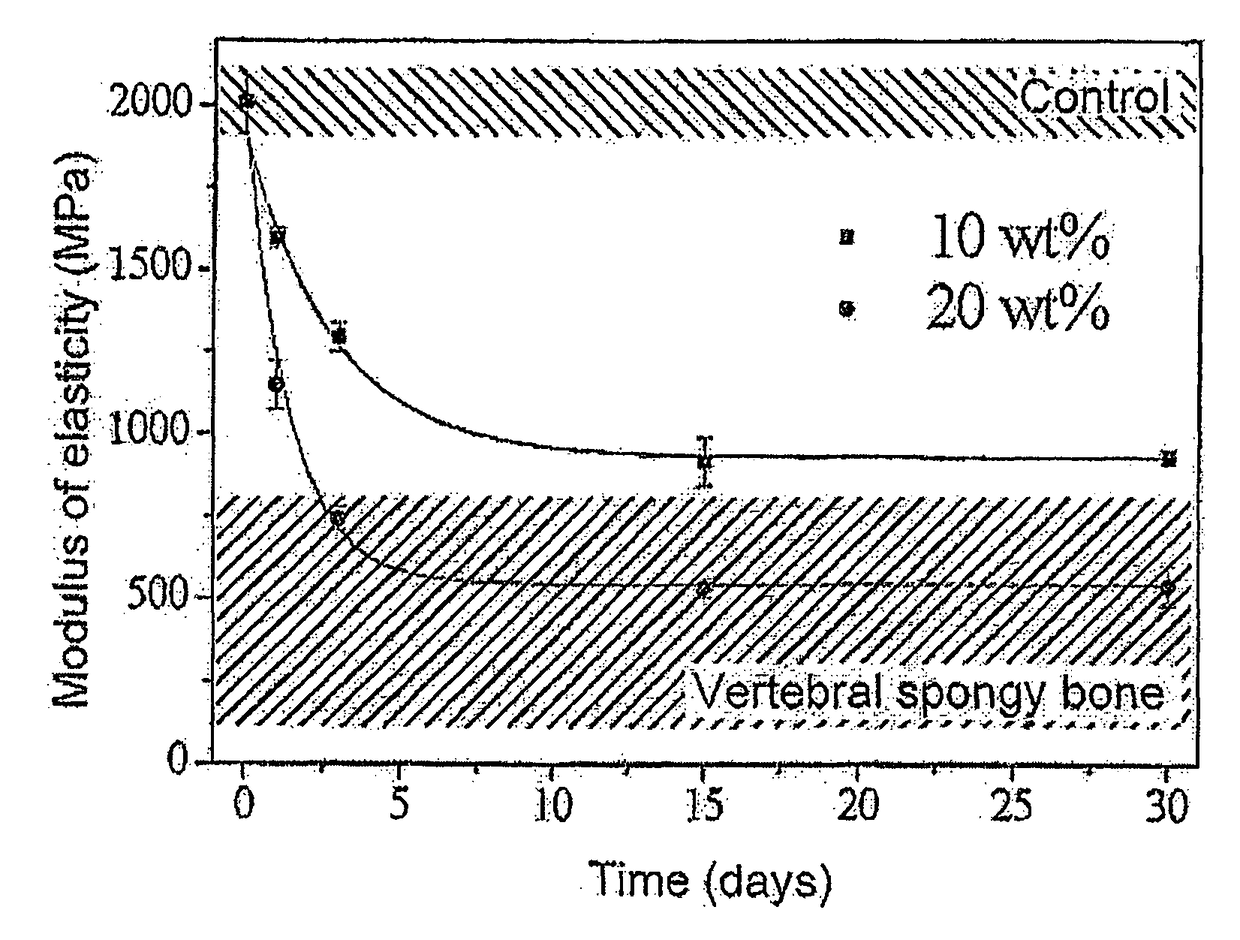Bone filling cement
a technology of acrylic cement and bone filling, which is applied in the field of polymer cements, can solve the problems of increasing the occurrence of fractures of vertebrae adjacent to the cemented vertebrae, and reducing the specific surface of acrylic cement, so as to reduce the stiffness of acrylic cement and reduce the risk of generating and dispersing debris
- Summary
- Abstract
- Description
- Claims
- Application Information
AI Technical Summary
Benefits of technology
Problems solved by technology
Method used
Image
Examples
example 1
mposition with 13% by Weight of Gelatin Relative to the Weight of Powder, (10% by Weight of Gelatin, Relative to the Weight of Cement)
[0085]
Powder phase (wt. %)PMMA43BPO0.4ZrO239.2HAP4.4Gelatin13Liquid phase (wt. %)MMA99DMPT1HQ20 ppmwhere P / L = 3.4Final Young's modulus = 1,000 MPa
example 2
mposition with 25% by Weight of Gelatin Relative to the Weight of Powder, (20% by Weight of Gelatin, Relative to the Weight of Cement)
[0086]
Powder phase (wt. %)PMMA37.1BPO0.4ZrO233.7HAP3.8Gelatin25Liquid phase (wt. %)MMA99DMPT1HQ20 ppmwhere P / L = 4Final Young's modulus = 500 MPa
example 3
Preparing a Bone Cement with Suitable Stiffness
[0087]Powder Component:
[0088]The powder phase is obtained by mixing the various ingredients.
[0089]Liquid Component:
[0090]The liquid phase is prepared by dissolving hydroquinone in the methyl methacrylate monomer. The stirring is maintained up to complete dissolution. DMPT is then added.
[0091]The two phases are packaged separately in containers suited to their conservation. The instantaneous preparation kits comprise a container containing the liquid phase and a container containing the powder phase.
[0092]Binary Composition
[0093]During use in the operating theater, the containers are opened and their contents are mixed together. The powder dissolves rapidly in the liquid phase, giving a fluid mixture that is injected into the vertebral body of the patient through suitable tubing. The BPO initiator and the DMPT activator react to form free radicals that initiate the polymerization reaction of the cement. The surgeon then has at least fift...
PUM
| Property | Measurement | Unit |
|---|---|---|
| Young's modulus | aaaaa | aaaaa |
| diameter | aaaaa | aaaaa |
| diameter | aaaaa | aaaaa |
Abstract
Description
Claims
Application Information
 Login to View More
Login to View More - R&D
- Intellectual Property
- Life Sciences
- Materials
- Tech Scout
- Unparalleled Data Quality
- Higher Quality Content
- 60% Fewer Hallucinations
Browse by: Latest US Patents, China's latest patents, Technical Efficacy Thesaurus, Application Domain, Technology Topic, Popular Technical Reports.
© 2025 PatSnap. All rights reserved.Legal|Privacy policy|Modern Slavery Act Transparency Statement|Sitemap|About US| Contact US: help@patsnap.com


